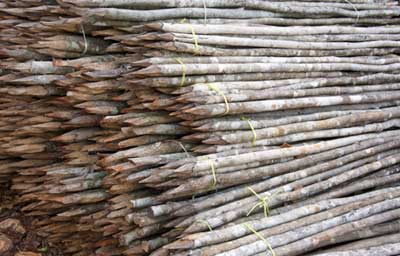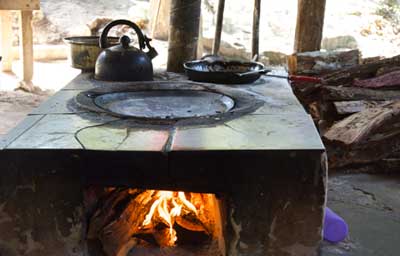Prólogo e introducción
|
Prólogo En México, cerca de la mitad de los bosques y selvas son propiedad de comunidades y ejidos. En la Selva Maya de la Península de Yucatán, esta proporción es de 61.3%. Como consecuencia, los habitantes tienen la capacidad de tomar decisiones para definir el destino de la selva. En la actualidad, la Selva Maya enfrenta numerosos retos. Uno de ellos es el cambio climático, que por la ubicación y geografía de la Península, presenta y presentará impactos importantes: sequías más pronunciadas, huracanes, mayor erosión de suelos, entre otros impactos que afectan a los ecosistemas, habitantes y productores. Otra amenaza importante es la erosión gradual de la biodiversidad. Las cadenas tróficas están siendo afectadas principalmente por la fragmentación y deterioro del hábitat de las especies. Por ejemplo, las poblaciones de grandes mamíferos están disminuyendo a tal grado que varios se encuentran hoy en peligro de extinción. El deterioro de los medios de vida de las comunidades es otro síntoma de este proceso. Por un lado, la autonomía alimentaria está siendo afectada, y ello repercute sobre los paisajes productivos. La Milpa Maya, incluyendo el solar, el t’olche’ y otras prácticas de alto valor cultural y compatibles con el manejo sustentable de recursos naturales y paisajes, experimentan una transformación acelerada. Los mercados locales, forestal, agrícola y ganadero proveen pocos incentivos para la producción sustentable y pocas actividades del campo resultan realmente beneficiosas para los productores. Ante este panorama, muchas comunidades, acompañadas de las organizaciones de la sociedad civil han decidido experimentar nuevas formas para lograr una conservación y un desarrollo rural sustentable, el cual debe ser compatible con la biodiversidad, a la vez que permita mitigar y adaptarse ante los impactos del cambio climático. Estos pioneros trabajan en conjunto para experimentar, aprender, e innovar probando modelos y esquemas originales, con el objetivo de lograr un desarrollo compatible con la preservación de los recursos naturales. Para acompañar estos procesos, se ha construido en los últimos 30 años una importante sociedad civil organizada. Las organizaciones de la sociedad civil (OSC) juegan un papel fundamental en el seguimiento de los procesos de desarrollo en los territorios de la región. Contribuyen por ejemplo a gestionar fondos ante dependencias y organismos internacionales, crear procesos de cambio a mediano plazo, y funcionan como agentes de desarrollo local. De su lado, las comunidades y los productores líderes han tomado riesgos: algunos arriesgan su producción para probar una mejor practica agrícola, otros su tiempo para adquirir nuevas capacidades. Otros arriesgan recursos y patrimonio para fomentar la conservación comunitaria y privada. Todas estas comunidades y productores líderes son esenciales para pilotear acciones que permiten un verdadero desarrollo territorial sustentable. El objeto del presente libro es de presentar una serie de experiencias, contadas por productores y las OSC locales que los acompañan y que contribuyen sustancialmente a que los cambios sucedan. Su empeño y dedicación para operar programas y proyectos en campo de la mano de las comunidades y de los productores permitirá que se transforme la realidad del campo, hacia un modelo de desarrollo rural verdaderamente sustentable. Por ello, este libro presenta un abanico amplio de experiencias, donde el nuevo paradigma del desarrollo rural sustentable viene a complementar acciones de conservación tradicionales. Se presenta mediante artículos, pero también usando plataformas multimedia de experiencias específicas,[1] y lecciones aprendidas que esperamos contribuyan a motivar a jóvenes profesionistas y miembros de las comunidades a intentar contribuir en este cambio. Marca también una etapa nueva en la sociedad civil de la Península de Yucatán: las OSC, las comunidades y las instituciones están formando cada vez más alianzas, comunidades de aprendizajes y redes regionales que permiten potencializar y escalar las acciones exitosas. Este movimiento, necesario para poder abarcar una mayor parte del territorio, permitirá incluir a más comunidades, y fortalecer la sociedad civil mediante una especialización y una profesionalización cada vez mayor. Finalmente, es importante reconocer el trabajo de campo y de sistematización por parte de Biosakbé, una organización que aceptó el reto de recorrer esta vasta región para escuchar la voz de los que son parte del cambio. También, queremos hacer especial énfasis en el apoyo de la Fundación W.K. Kellogg, la Fundación Claudia y Roberto Hernández, y la Fundación Harp Helú, sin el cual no hubiera sido posible realizar este libro. Sébastien Proust Coordinador de la Alianza México REDD+ en la Península de Yucatán. The Nature Conservancy.
Introducción Una selva que fue testigo del esplendor de una civilización esconde cientos de pirámides mayas como vestigios mudos de aquellos tiempos. La Selva Maya de la Península de Yucatán es uno de los últimos refugios donde el jaguar aún mantiene una población de alta densidad, y comparte el territorio con otras cuatro especies de grandes felinos: pumas, ocelotes, tigrillos y jaguarundi. También es el hogar de otras especies de alto valor biológico, como el tapir, tres especies de monos de las cuales una es endémica, y dos especies de pecarí, entre otras. Una selva que da sustento a miles de familias, las cuales manejan su recurso natural con una visión holística. Sin embargo, en las últimas décadas ha tenido lugar un avance acelerado de la frontera agropecuaria y urbanística que comienza a fragmentar el paisaje con la consecuente amenaza para la biodiversidad de esta región y los medios de vida de las comunidades. Esta situación ha incentivado a muchas organizaciones para la búsqueda de esquemas de producción y de gobernanza que pudieran hacer frente a las fuerzas que conducen hacia el deterioro de la Selva Maya.
Selva Maya de la Península de Yucatán Uno de los escenarios que se presentan como una oportunidad para enfrentar estos retos es el mecanismo de Reducción de Emisiones por Deforestación y Degradación (REDD+), para el cual la Península de Yucatán se considera un sitio destacado. Con el objetivo de fortalecer el desarrollo rural y forestal bajo en carbono, se crea la Alianza México REDD+, una iniciativa conformada por las organizaciones no gubernamentales The Nature Conservancy, Rainforest Alliance, Espacios Naturales y Desarrollo Sustentable y el Woods Hole Research Center. La Alianza opera en tres escalas diferentes: local, estatal y nacional, ya que pretende probar herramientas y abordajes a nivel local, y proveer lecciones aprendidas para refinar estrategias estatales y nacionales. Este enfoque permite tanto el involucramiento local –en la implementación de estrategias para reducir la deforestación y promover producción sostenible, como la incidencia en el marco de políticas públicas a nivel estatal y nacional. En este contexto, en el año 2012 un grupo de organizaciones se reunió en el primer taller para la conformación de una Comunidad de Aprendizaje (CAREDD+) de la Península de Yucatán, que mediante el intercambio de conocimientos busca fortalecer capacidades en temas de desarrollo sustentable bajo en emisiones de carbono. Complementario con estos objetivos se creó la Alianza Itzincab, integrada por muchas de las organizaciones de la CAREDD+, y cuyo objetivo es consolidar una red de áreas que cubran hábitats críticos y representativos de la diversidad de ecosistemas bajo un esquema de conservación, manejo y uso sustentable en aproximadamente dos millones de hectáreas en la Península de Yucatán. El presente trabajo es un esfuerzo por sistematizar las experiencias de algunas de las iniciativas de desarrollo rural sustentable y proyectos que contribuyen a reducir la deforestación en la región, y que de esa manera hacen su aporte en la conservación y manejo sustentable de la Selva Maya en la Península de Yucatán. La gama de proyectos aquí representados, nos permite categorizarlos en esfuerzos de 1) agricultura y ganadería sustentable, 2) uso sostenible de recursos forestales, 3) restauración del paisaje forestal, 4) proyectos productivos comunitarios y 5) monitoreo de biodiversidad y conservación (ver infografía). En su diversidad temática y alcance regional palpamos el significado agregado de estas prácticas y su potencial para lograr un cambio a nivel territorial.
|





















